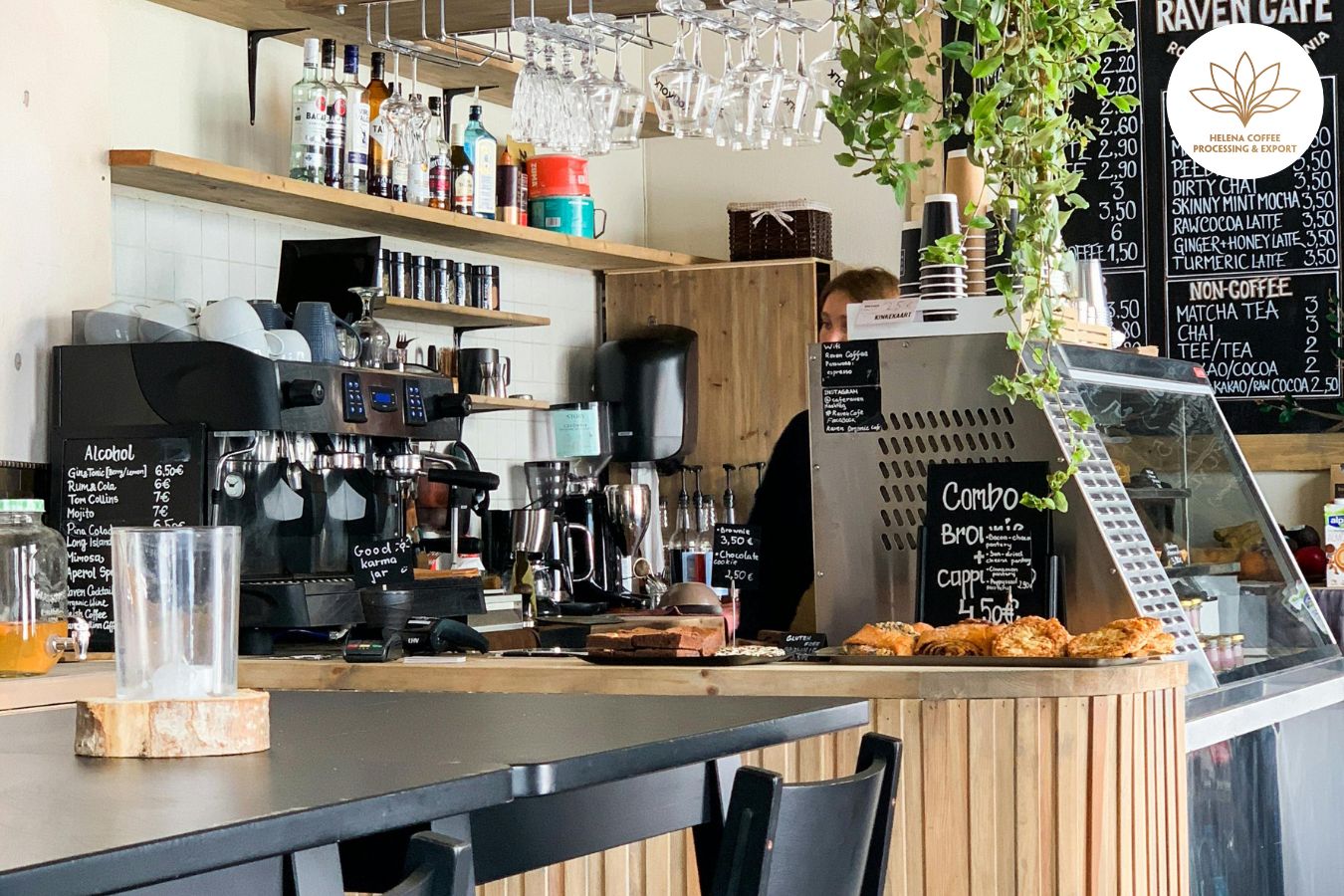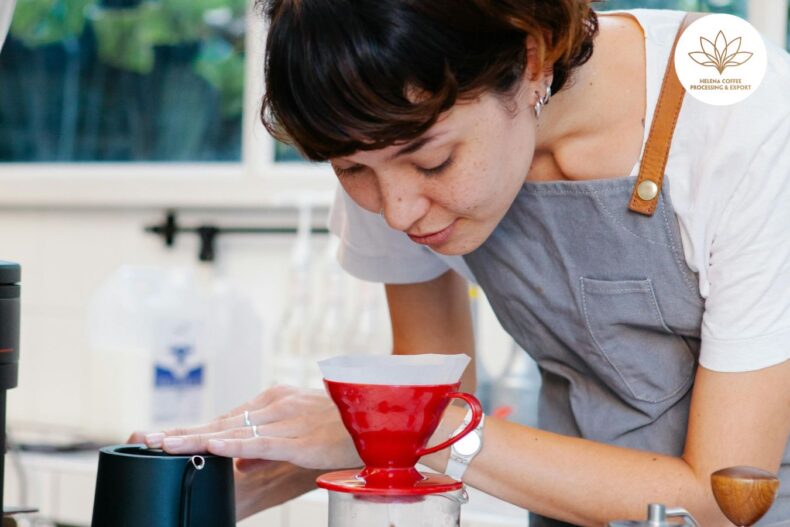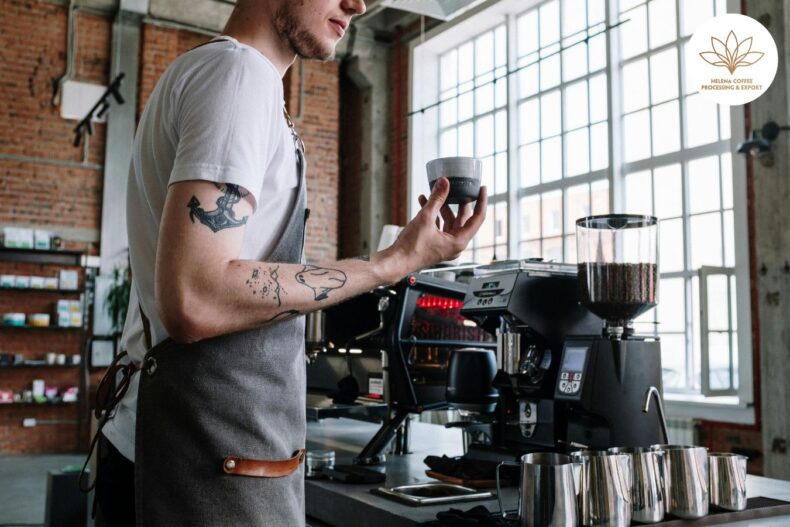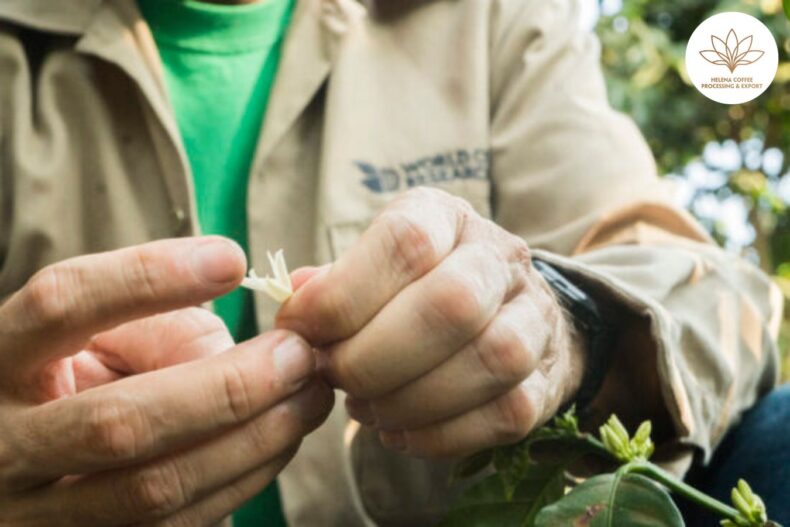
Coffee Shops Diversify: It is no surprise that coffee shops and roasters have a star product that is, and will continue to be, the center of their business: coffee. Selling drinks and bags of beans is an essential part of their business model.
All in all, in the modern coffee industry, many coffee shops and roasters have begun to expand their product range to diversify their income, differentiate their brand and ensure different sources of profit. Just as it offers greater stability for the business, it also allows you to sell other products that represent the values and identity of the brand.
To find out more, I spoke with José De León Guzmán and Agnese Idà of Kofra Coffee Roasters . They told me about the diversification of products in the coffee sector. Keep reading and find out what they told me.
What is product diversification?
José is the CEO and founder of Kofra , a specialty coffee roaster with four locations in Norwich, UK. He explains how Kofra began to diversify beyond coffee.
“At first, I didn’t really want to sell anything other than coffee,” José says. “Not even pastries. “I just wanted to sell retail bags and coffee-based drinks.” Coffee shops diversify: “After a while, the staff told me they got frustrated saying no to people who wanted to buy baked goods.”
Although any successful coffee brand should focus on sourcing , roasting or brewing high-quality coffee, restricting your product range can leave the business vulnerable. This is why many brands diversify.
Product diversification is a simple concept. Through the process of adding new products it is possible to achieve new sources of income, as well as guarantee some stability in the future if a problem occurs with the main product. For cafes and roasteries, baked goods, coffee brewing equipment, and merchandising products are common options.
Agnese is the wine buyer and head of luxury sourcing at Kofra . She notes that diversification is not just about selling more to increase profits, but about aligning new products with the brand.
Coffee shops diversify: “We spend a lot of time sourcing, not just interesting products but products that make sense to us. “We want to complement our philosophy with quality products and products that come from people we love working with.”
How could consumer behaviour evolve in the coming years?
Given the diverse range of emerging trends in the specialty coffee industry, it will be interesting to see how consumer behaviour will change over the next decade or so.
“One of the biggest drivers could be an increasing awareness of the health benefits of coffee,” Bill suggests. Coffee shops diversify: “Many independent scientific studies carried out over the past few decades show that drinking coffee can be beneficial to your health.”
Anne-Marie agrees, saying: “European consumers are increasingly concerned about the impact of food on their health and wellbeing. According to the Institute for Scientific Information on Coffee (ISIC), global online searches for ‘health benefits of drinking coffee’ increased by 650% in 2021.
“Now, there is a growing range of coffee products which contain no dairy or no added sugar, or include functional ingredients,” she adds. “Consumers are also more concerned about the negative side effects of drinking too much caffeine, so the consumption of high-quality decaffeinated coffee in both the US and Western Europe has grown year-on-year since 2017.”
The advantages of diversification
The immediate and obvious advantage of any successful diversification strategy will simply be an increase in sales and profits. Likewise, there are a number of benefits in the medium and long term.
“By creating new product lines, you add diversity,” says Agnese. “Instead of being just a cafeteria, you can become an all-in-one store for select products and a refuge for food lovers, for example.” Coffee shops diversify: “Through product diversification we have become the go-to place to find carefully selected, high-quality products that you don’t get at the local supermarket.”
By offering new products that align with your brand identity, you can clarify and refine what your company is passionate about and then communicate this to your customers. Also, you can demonstrate the ability to keep pace with changing customer tastes and demands.
Coffee shops diversify: “In some cases, it’s about offering things that you wouldn’t find in other stores,” José says. “Now people who come to Kofra stores have the feeling that shopping with us is a special occasion.” Diversification can also have a broader impact on the community. Partnering with other local businesses, such as bakeries, coffee farmers or even artists, boosts the local economy and communicates that you are passionate about doing it.
“Local sourcing is undoubtedly desirable,” explains Agnese. “That’s why we source many of our products close to our stores. For example, we offer beef that we dry-age in the store and milk from local farms.” Coffee shops diversify: “However, we firmly believe that local does not necessarily mean better. Quality is an important factor and we seek to work with companies that make sustainable and environmentally friendly decisions.”
Food and drinks
We have already seen why coffee brands diversify into different product categories. Now, what products to choose?
Firstly, although coffee should remain the main element of any cafe or roastery, diversification into other food and beverage categories may ultimately be a natural or organic process.
Came
Wine is a great example. For years, parallels have been drawn between the coffee and wine sectors, with concepts such as terroir, palate and experimental production.
Coffee shops diversify: “At Kofra, our wines are all organic, biodynamic and low intervention,” says Agnese. “This means that there is as little interference as possible with the product and the process, showing the true expression of the grape and the terroir.”
Natural (or low-intervention) wines use few or no additives (such as sulfites, sugars, and acids) in the manufacturing process. The lack of stabilizers often creates fruitier, more complex flavors, similar to what you would find in naturally and experimentally processed coffees.
“After finding similarities between our wines and coffees, it soon became a labor of love,” says Agnese. “Now it is a channel of expression for the team and the company as a whole.” Coffee shops diversify: “We started with just a few bottles and now have more than 100 wines from all over the world, from a well-loved classic Chianti to quite curious blends,” says Agnese. Coffee shops diversify: “The same thing happens with our selection of craft beers. “With the industry growing so quickly, there is certainly more demand for great beers.”
Beer
José says this is another natural step and that many consumers with an affinity for specialty coffee appreciate craft beers . There is often what he calls the “small batch philosophy” behind both products.
Coffee shops diversify: “If you like good coffee, you might [also] like good beer,” he says. “It was a natural progression for us. Very soon our beer began to sell very well and we understood that there was an excellent synergy between beer and coffee.”
An investigation by Business Insider showed that craft beer sales increased 15% from 2012 to 2013 and IPA (India Pale Ale) beer sales alone grew 40%. Furthermore, the global craft beer market is expected to reach US$200 million by 2026 .
“Kofra works with a maximum of two, three, four breweries [to keep prices] fair and make the products more accessible,” says José. “[A few years ago], many breweries used espresso as a base for stout, so we created a stout cold brew .”
“We won the gold medal in the best flavor category in the UK national competition,” he adds.
Cake shop
Cakes, pastries and other baked goods are a common sight in most cafes as they go well with coffee. Now, José explains that in Kofra the foods are somewhat different and the dry-aged meat especially stands out.
Coffee shops diversify: “It is a premium product because that is what the specialty is about,” he explains. “It’s about traceability. “We buy meat from local grass-fed cows that are well treated.”
Sale of equipment and merchandising
This is another area where cafes and roasteries can diversify. Now, the storage and sale of equipment such as household grinders, scales, kettles and coffee makers, for example, became considerably more popular as a new product category during the COVID-19 pandemic.
Coffee equipment sales increased 11% in the United States with an average price of US$139. Coffee shops diversify: This demonstrated one thing above all: consumers’ growing interest in making quality coffee at home.
However, José warns of the danger of focusing too much on the sale of equipment. He notes that there are almost always larger retailers that can offer better prices. Coffee shops diversify: “We don’t sell coffee equipment because we can’t compete with Amazon,” he explains. “What we can do is sell products related to our brand.”
Branded:
Another option is merchandising , a way to diversify your product range and promote your brand at the same time. You can add your logo or slogan to mugs, caps, t-shirts or jackets, for example. In any case, José insists that quality must continue to be at the forefront of all products, including merchandising items .
Coffee shops diversify: “The merchandise should be something you earn,” he says. “It can’t just be sticking a logo on some t-shirts you sell. People have to create that bond but you have to give them the quality you promise.”
“For example, the story of our t-shirts is simple. We found the best printers in Norwich and asked them for the best t-shirts they had to try out. I kept mine for six months and wore it to make sure it was high quality.”
Lastly, he notes that Kofra partnered with a local artist to create prints of each of their four coffee shops. They are all available on the internet. Coffee shops diversify: “The prints are from an artist who comes to Kofra every afternoon, so she made one for Christmas that we sent to our regular customers to say thank you,” he says.
How can coffee shop owners achieve successful diversification?
For product diversification to be profitable, you must start by marketing new products.
Agnese says that the use of social networks to announce new products has become a useful tool for Kofra. Coffee shops diversify: “Social networks have taken over from advertising,” he says. “Now they serve us to inform our customers about new lines and products.” Coffee shops diversify: “It allows us to publish quickly and easily as soon as a product arrives. It helps us feel connected to our communities and, in return, they feel more connected to us and the content we share.”
Product announcements through social media or email newsletters are especially useful for quickly reaching a broad customer base. This is especially the case if you have received many requests for certain new products. Beyond that, partnering with other local businesses that you trust and have similar values to yours can give you great ideas and inspiration.
Get inspired cconstantly:
Coffee shops diversify: “The inspiration is to visit other places, not necessarily to copy, but to learn and see where the trends are going,” says José. Agnese adds: “we travel, we eat and we look for people who are making a mark in their field when it comes to quality and sustainability, like us.”
Finally, José states that one of the most important factors for success is trusting your new products.
“You have to be proud of your products,” he says. “Then relate that to your customers. Create synergies. “It doesn’t matter what the product is, but that you are proud to tell that story.” Coffee shops diversify:“When I hired our first pastry chef, her pastries really complemented our coffee. The flavors represent Kofra and I am proud to sell them.”
Even so, José concludes by pointing out that the focus of the business must always be clear. “Ultimately, don’t forget that you are a coffee shop first and foremost,” he says.
Adding more products is an exciting project but also a process full of challenges. Keeping the brand at the forefront and ensuring that quality permeates all products sold will be the key to successful diversification. Coffee shops diversify: “We continue looking to present high-quality products in line with the brand,” concludes José. “That is the future of the coffee shop: offering the community a high-quality, one-stop shop.”
FAQS:


